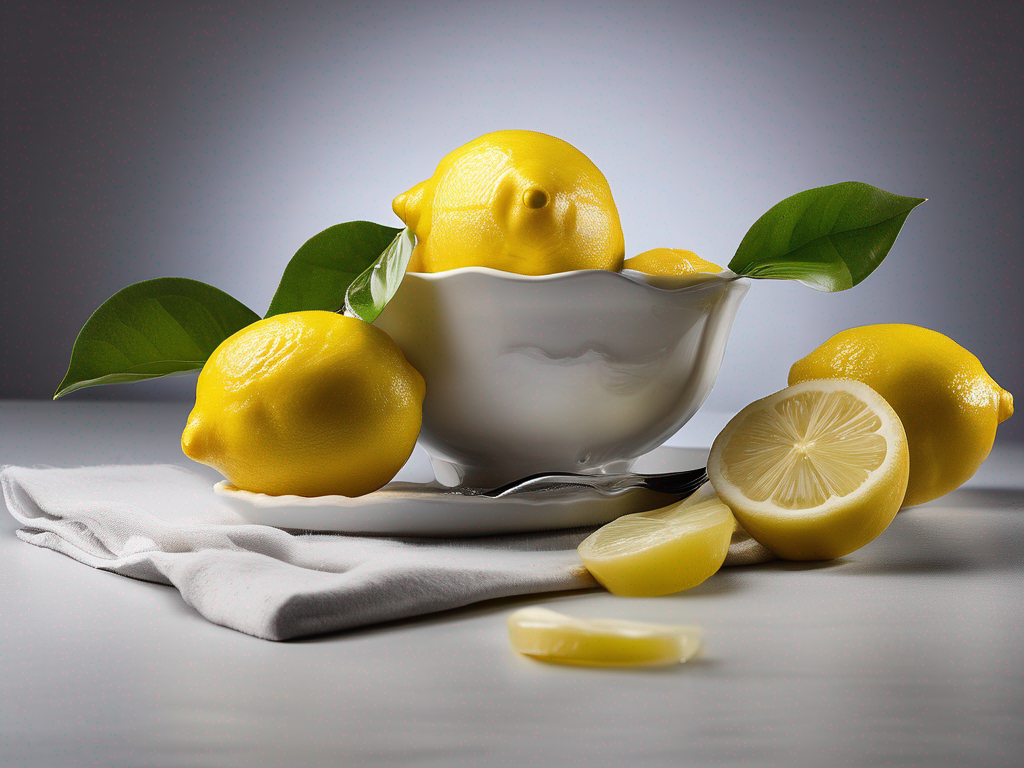
Is My Lemon Still Good to Eat? A Guide to Checking Lemon Freshness
Get Your Free Food Safety Cheat Sheet
30 most common foods with instant answers. Print it and stick it on your fridge—completely free!
Is My Lemon Still Good to Eat? A Guide to Checking Lemon Freshness
When it comes to fresh produce like lemons, it's essential to know how to determine if they are still safe to eat. Lemons are a versatile fruit used in cooking, baking, and even cleaning due to their acidic properties. However, like all perishable items, lemons can go bad if not stored or handled properly. In this guide, we will explore how to tell if your lemon has gone bad and provide tips on how to store them effectively. (Lemon)
Signs of Spoiled Lemons
Visual Inspection
- Mold: Check for any mold growth on the surface of the lemon. Mold can appear as fuzzy white or green spots.
- Discoloration: Look for any dark or soft spots on the skin of the lemon, as this can indicate spoilage.
- Shriveling: A lemon that is starting to shrivel or wrinkle is a sign that it is drying out and past its prime.
Smell Test
- Off Odor: A foul or fermented smell coming from the lemon is a clear indication that it has gone bad.
- Lack of Fresh Citrus Scent: Fresh lemons have a bright, citrusy aroma. If the lemon smells musty or stale, it is likely no longer fresh.
Texture
- Softness: Press gently on the lemon. If it feels overly soft or mushy, it is past its prime.
- Hardness: On the other hand, a hard and dried-out lemon is also a sign of spoilage.
Proper Storage of Lemons
To extend the shelf life of your lemons and keep them fresh for longer, follow these storage tips:
- Room Temperature: Lemons can be stored at room temperature for up to a week.
- Refrigeration: For longer storage, place lemons in a plastic bag in the refrigerator's crisper drawer.
- Avoid Moisture: Keep lemons away from moisture to prevent mold growth.
- Store Away from Strong Odors: Lemons can absorb odors, so store them away from strong-smelling foods.
Safety Tips for Handling Lemons
Washing Lemons
- Rinse: Wash lemons under running water before using them to remove any dirt or residue.
- Scrub: Use a vegetable brush to scrub the skin of the lemon, especially if you plan to use the zest.
Cutting Lemons
- Clean Cutting Board: Use a clean cutting board to cut lemons to prevent cross-contamination.
- Sharp Knife: Use a sharp knife to cut lemons cleanly without crushing them.
Storing Cut Lemons
- Refrigeration: If you have cut a lemon, store the remaining pieces in an airtight container in the refrigerator.
- Cover Cut Surfaces: To prevent the exposed flesh from drying out, cover the cut surfaces with plastic wrap.
Conclusion
In conclusion, knowing how to tell if your lemon has gone bad is essential for food safety and enjoyment. By conducting visual inspections, performing smell tests, and checking the texture of the fruit, you can determine if a lemon is still good to eat. Proper storage and handling techniques can also help extend the shelf life of lemons and keep them fresh for longer. By following these tips, you can ensure that your lemons are safe and delicious to use in a variety of culinary applications.
Remember, fresh lemons are not only a flavorful addition to dishes but also a great source of vitamin C. By keeping your lemons fresh and safe to eat, you can continue to enjoy their bright and tangy flavor in your favorite recipes.
For more information on lemons and other food safety topics, visit our lemon section. (Lemon)
Authoritative Food Safety References
These agencies and university labs inform every tip and health precaution we publish.
USDA FoodKeeper – Cold Storage Guidelines
Official refrigerator, freezer, and pantry timelines maintained by the U.S. Department of Agriculture.
Visit USDA FoodKeeperFDA Produce Safety Rule & Grower Guidance
Field-to-fridge handling practices that prevent contamination of fruits, vegetables, and leafy greens.
Visit FDA Produce SafetyCDC Foodborne Illness Prevention Hub
Surveillance-backed guidance on pathogens, symptoms, and steps to reduce foodborne illness risk.
Visit CDC Food SafetyUC Davis Postharvest Technology Center
University research detailing optimal storage atmospheres for produce after harvest.
Visit UC Davis PostharvestPenn State Extension – Home Food Preservation & Safety
Peer-reviewed extension bulletins on safe canning, chilling, and reheating practices.
Visit Penn State ExtensionGet Your Free Food Safety Cheat Sheet
30 most common foods with instant answers. Print it and stick it on your fridge—completely free! Want more? Upgrade to the complete guide with 70+ foods.
Scan your food directly and get instant safety info using our AI-powered camera feature.